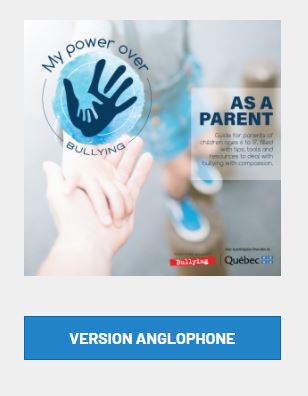An anti-bullying guide in four languages

How should we react if our child is being bullied? What about if it’s our child that is bullying others? What’s the difference between anger and violence? What should we do if we witness bullying?
Parents can find the answers to all the questions and more in a guide called “My Power Over Bullying” which was created by workers from 5 organizations in the region with the support of the Comité régional de concertation contre l’intimidation et la violence and the participation of the CSSDGS.
The 32-paged document was officially launched on June 1st and is available online and free of charge in four languages; English French, Spanish and Russian.
“These are the languages most often spoken on our territory,” indicated Roxanne Brousseau, from Benado, during a Zoom press conference on June 1st.
What are the most important elements of the guide? “Taking the time to talk to children together. That about summarizes the entire guide,” she responded.
The guide was created with Julie Mailhot from Espace Châteauguay, Chantal Brasseur from Avif, Claudia Lavigueur and Jennifer-Ann Dooling both from Re-Source and Véronique Beauregard from CALACS Châteauguay, and it mainly designed for parents of elementary and high-school students. It aims to provide them with the tools to understand the serious issue of bullying, its impact on individuals and how to approach the topic with goodwill.
It deals with different types of bullying including cyberbullying and bullying in romantic relationships, as well as the laws that apply.
The contact information for the committee member organizations that can support parents can be found in the guide. The works of drawing competition winners can be found inside as well.
The guide was produced with $40,000 in financial support from the Ministry of Families as part of the Quebec government program “Together Against Bullying.”
Translated Versions
On June 1st the committee also announced that the “Resources for the Prevention of Violence and Bullying” guide was already available in English. The document that was originally launched in French in 2019 was geared for school professionals.
“This guide is a simple and effective tool because it lists all the preventive and direct actions and the resources that could help school workers in need of assistance. It is presented according to different themes, adapted to the current realities of each different sphere; violence in romantic relationships, the trivialization of words and gestures related to sexuality in relationships, cyberbullying and trivializing words and violent actions among elementary and high school students,’ the group of organizations explained.
(Translation Amanda Bennett)